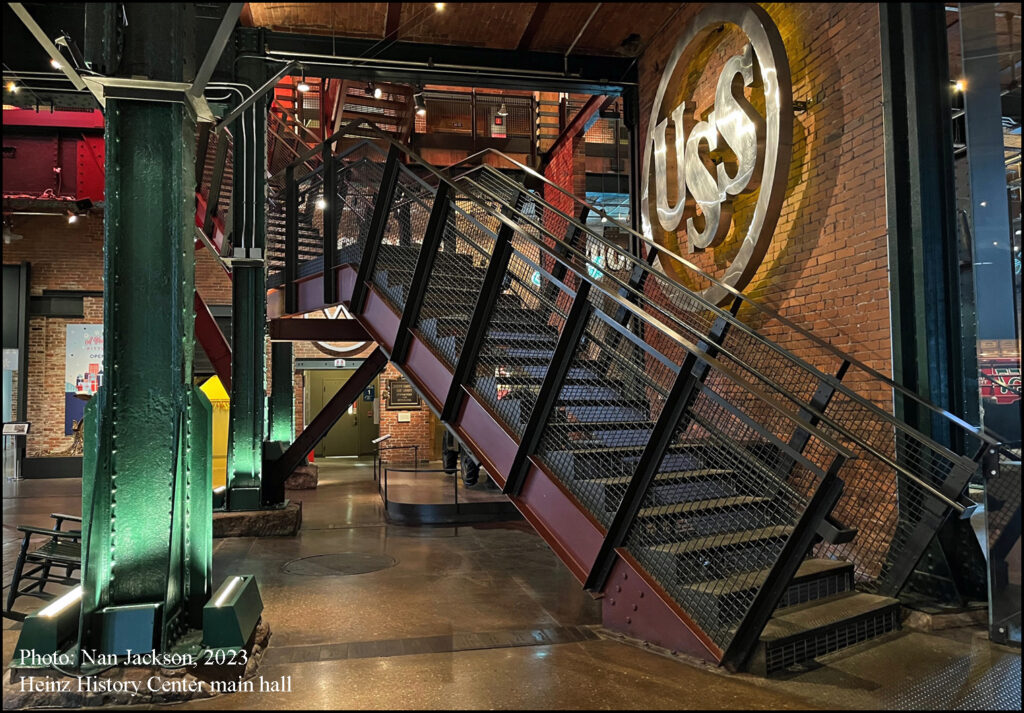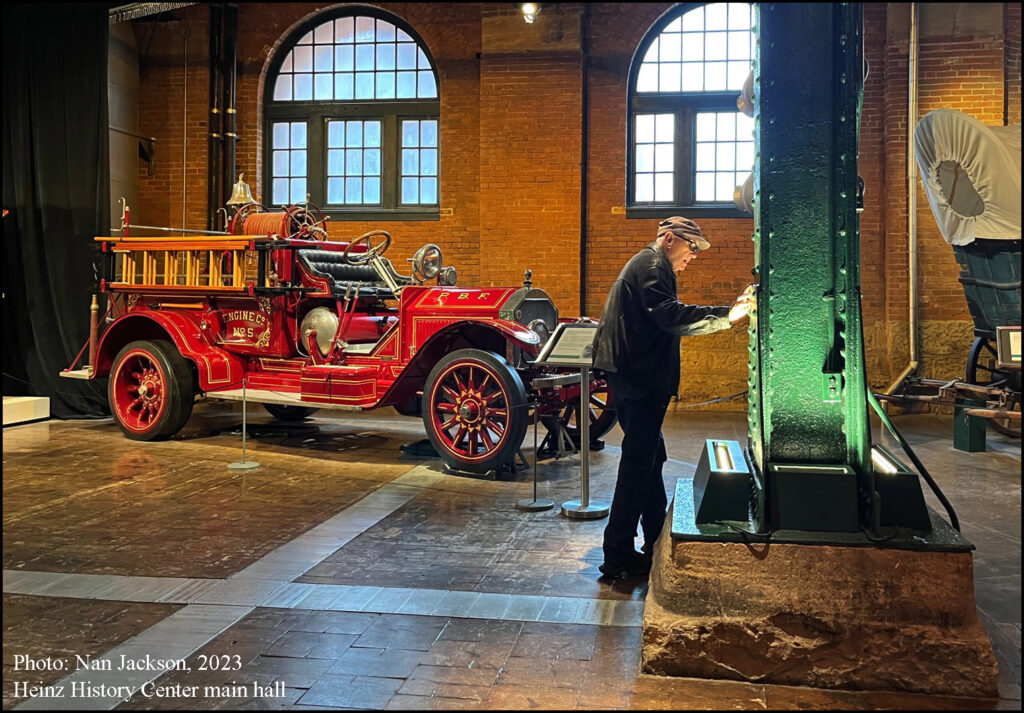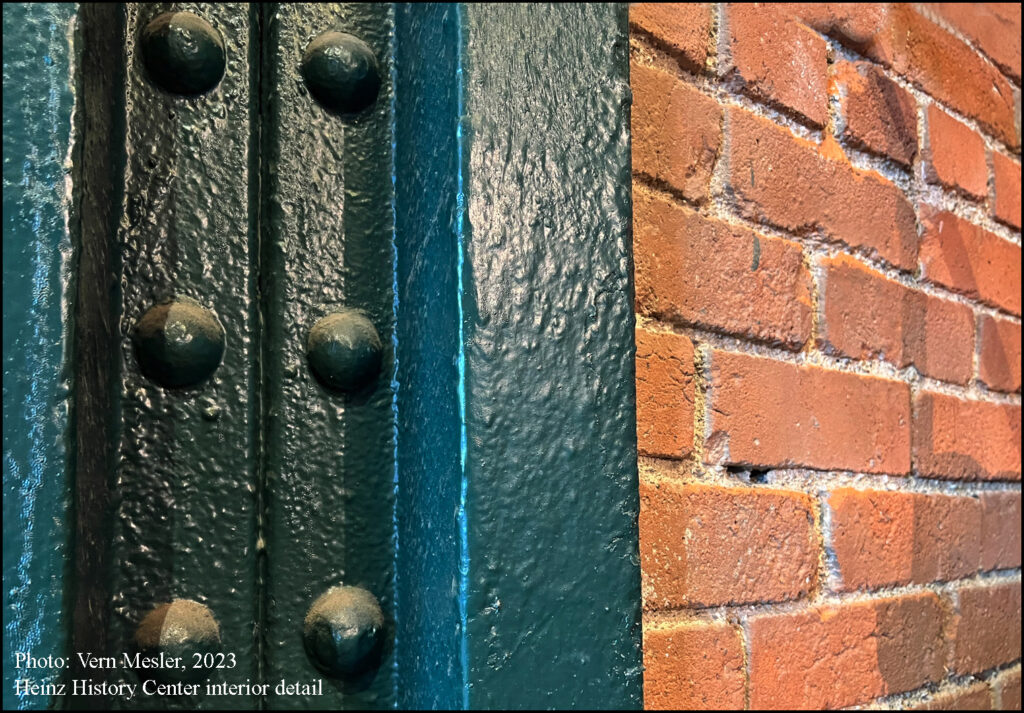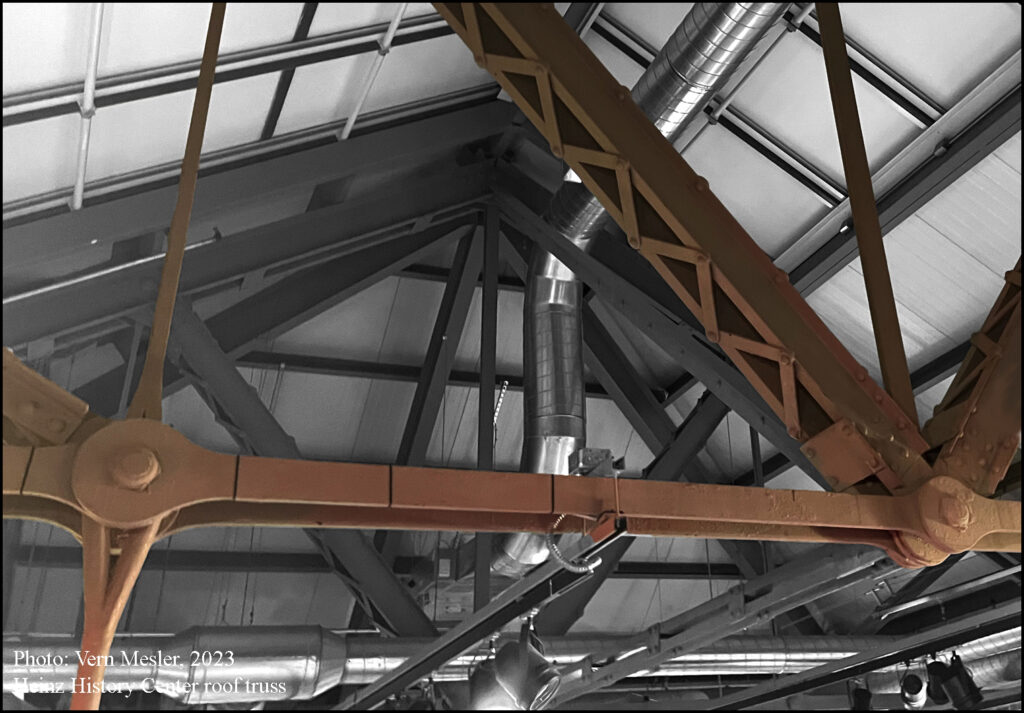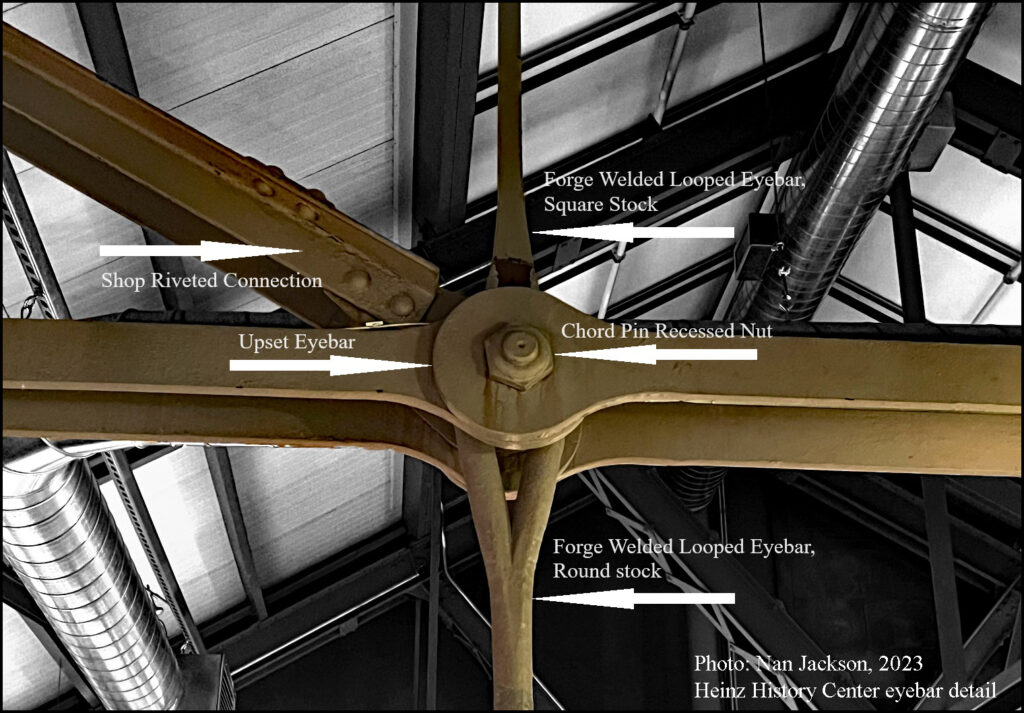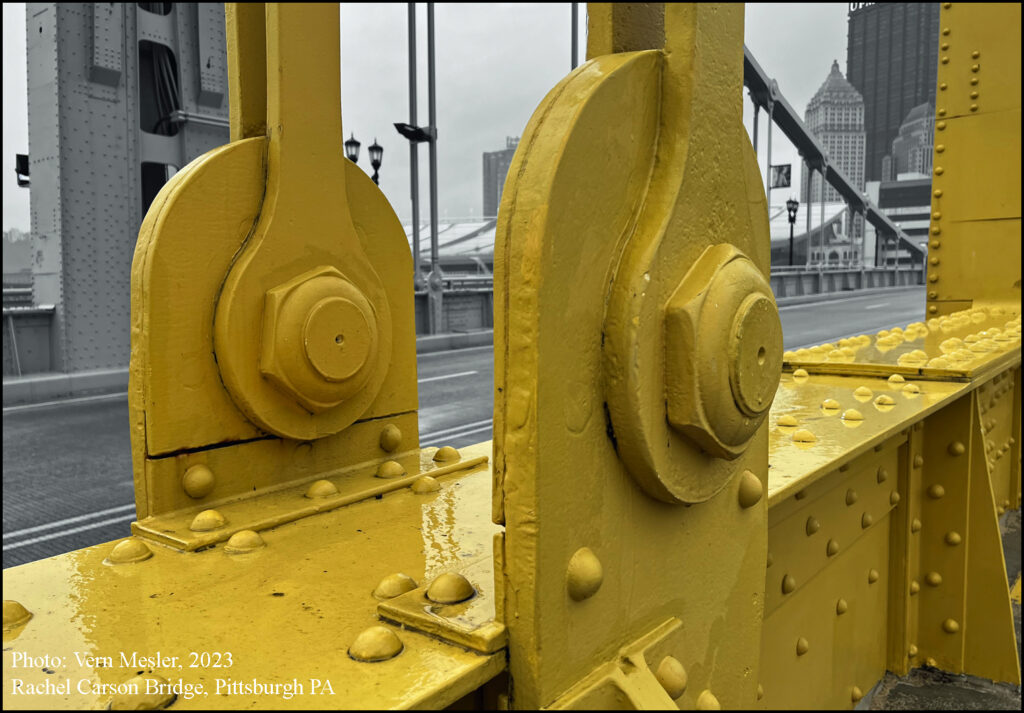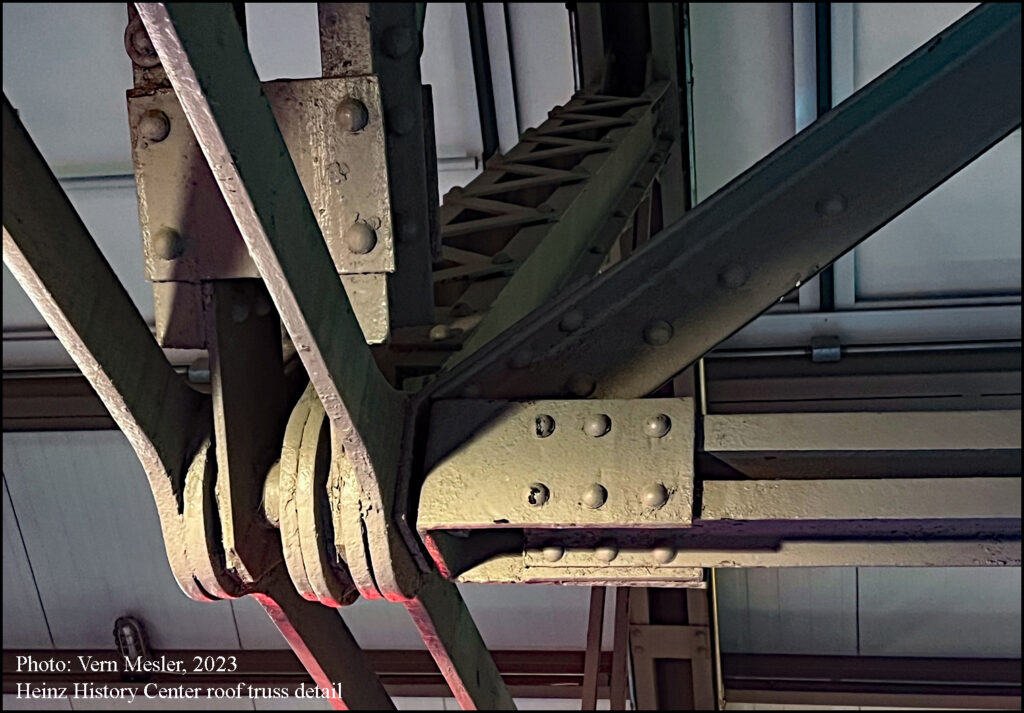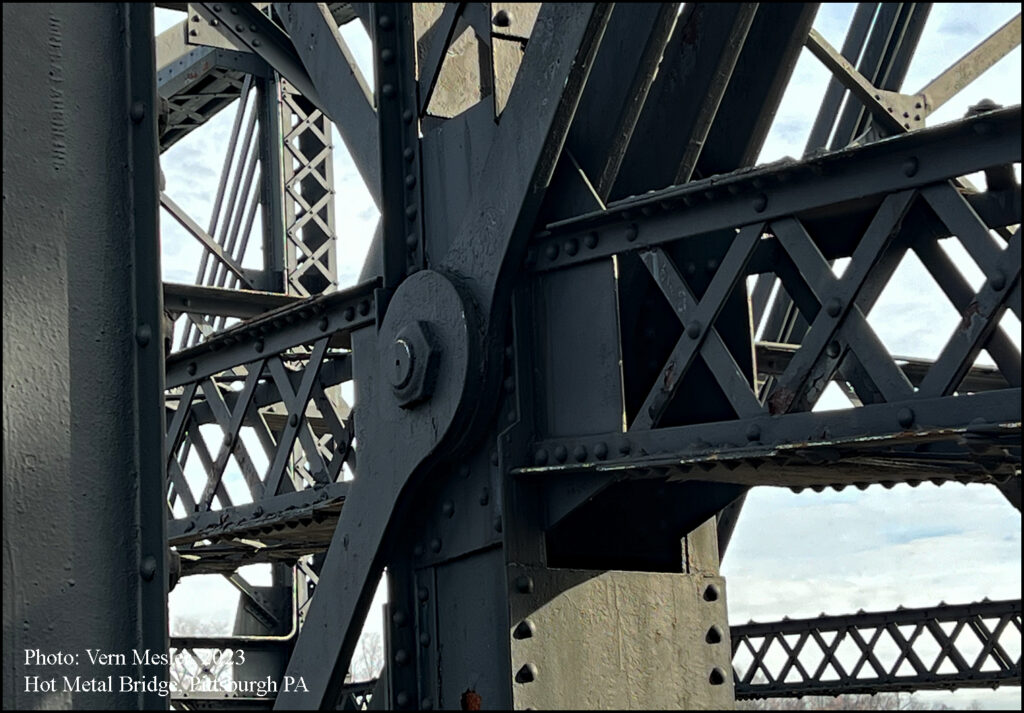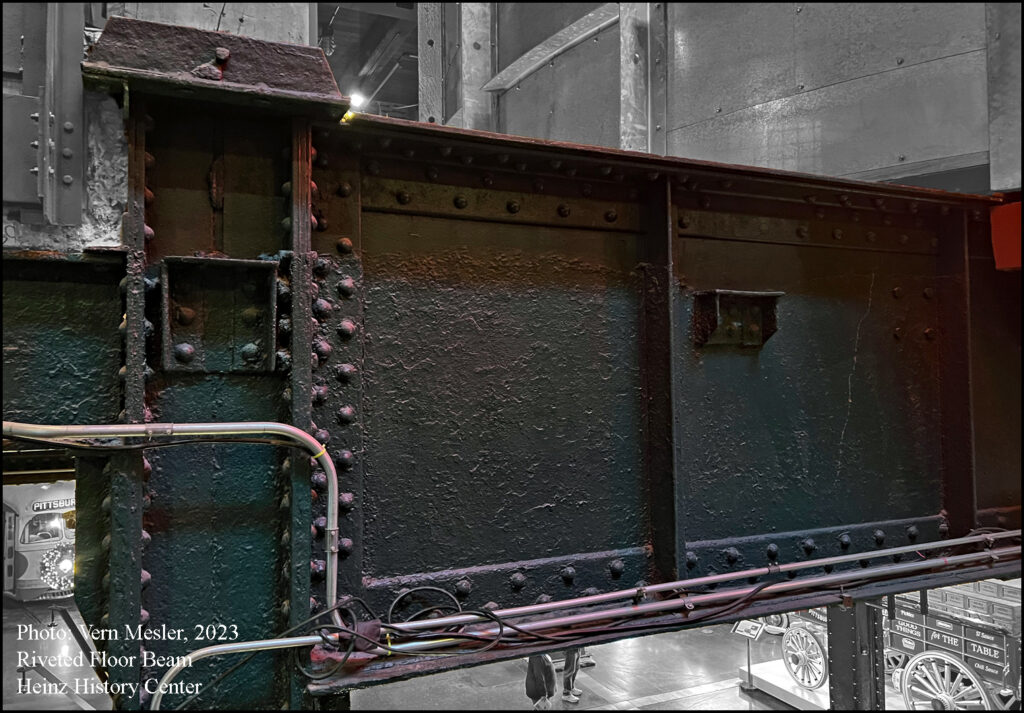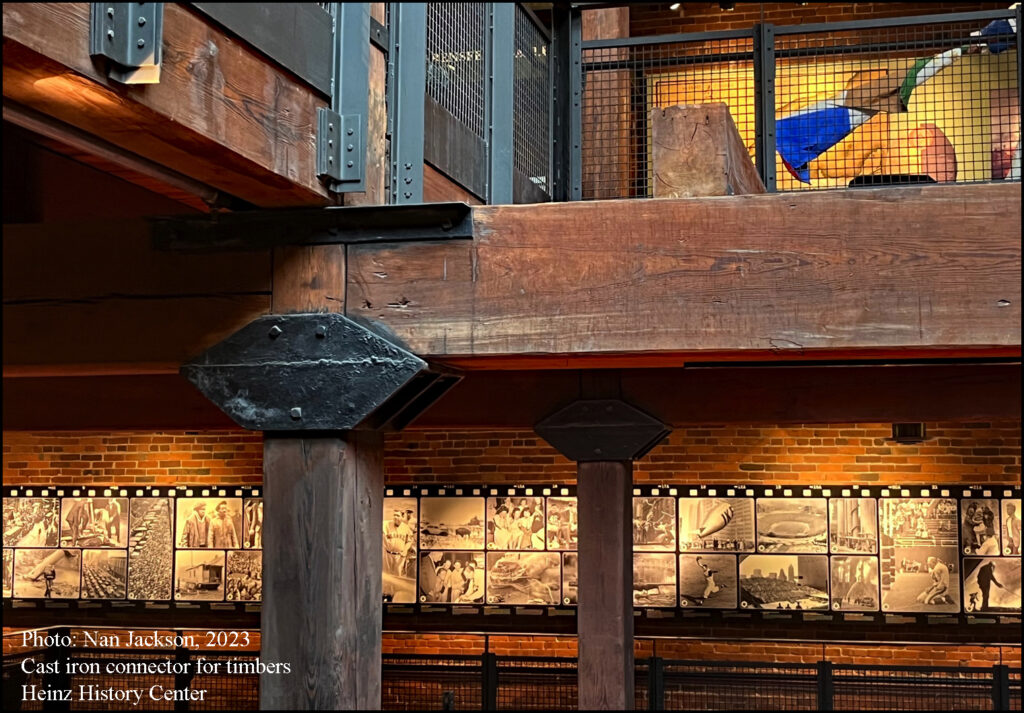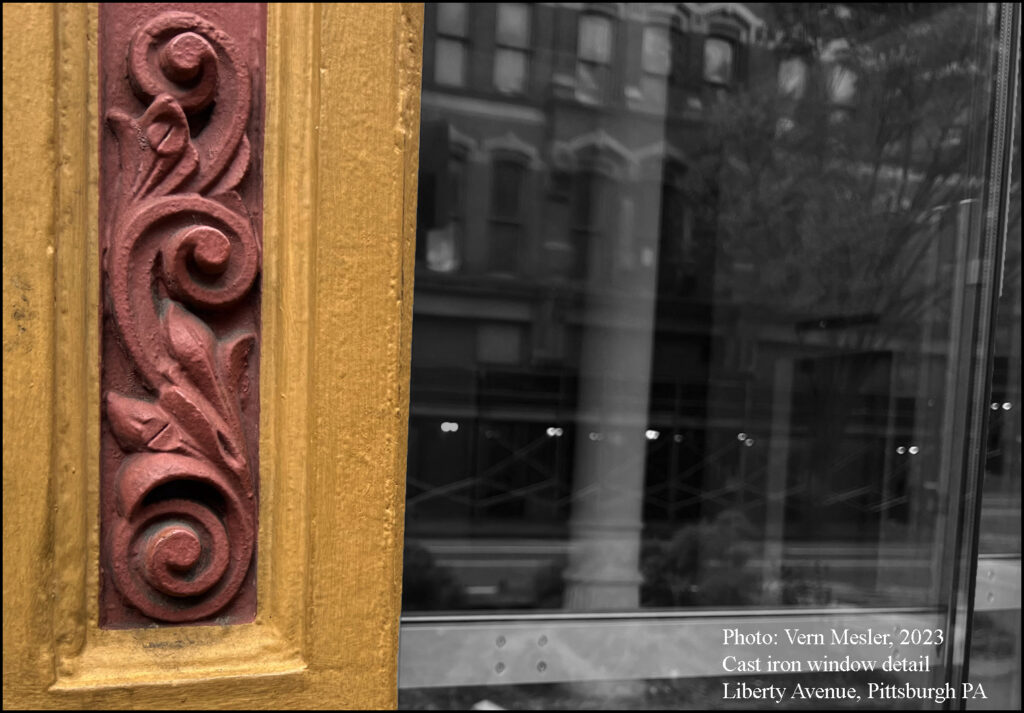Senator John Heinz History Center
Pittsburgh’s historic bridges, shop riveted. Eyebars, forged and upset. Cast iron, wood patterned and set in sand.
Pittsburgh’s nineteenth and early twentieth century bridges are preserved and still carry vehicular traffic across the region’s famous rivers, the Allegheny, the Ohio, and the Monongahela. Besides Pittsburgh’s historic bridges, nineteenth century brick buildings have been refurbished and repurposed, their industrial architectural features prominently visible. One example is the Senator John Heinz History Center, located near the old market district, between a railroad line and the Allegheny River. Built in 1898, its massive riveted columns and floor beams supported tons of blocked ice for the Chautauqua Ice Company, ice harvested from Chautauqua Lake in Mayville, New York. While the History Center’s multiple floors of exhibits are historically significant and professionally presented, it is the building itself that industrial craftsmen may find of greatest interest. Shop-riveted floor beams, columns, and trusses are visible throughout the building. Impressive shop-riveted iron and steel structural members frame red brick walls.
In the Heinz History Center are historic iron and steel structural members like those seen in Pittsburgh’s bridges. Forge-welded looped eyebars and upset eyebars appear in the roof trusses of the building. The wrought iron looped eyebars were heated to a welding heat at the loop and hammered to fusion with a powered hammer or by craftsmen with sledgehammers. Upset eyebars are tension members that can be seen on many of Pittsburgh’s historic bridges, and their forging required large furnaces to heat the end of the bar stock; these heated ends were rammed in a series of dies to form the eyebar head.
Chord pin recessed nuts are another historically significant feature of the trusses of the Heinz History Center building. Recessed nuts in pin-connected truss bridges are often overlooked or discarded during the restoration of nineteenth and early twentieth century bridges. These recessed nuts were especially designed for pin-connected truss bridges, as described in an article from an 1897 Home Study Book.
Columns, floor beams, and trusses in the Heinz History Center would have been fabricated with shop-driven rivets, and then bolted or field-riveted at the connections during erection of the building, as would have been done in the construction and erection of a bridge.
The Heinz History Center building itself is an exhibit of a craftsman’s record in iron and steel.
Vern Mesler, 2024

